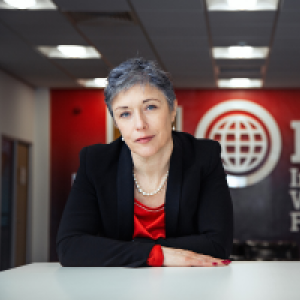Online grooming: close the door to abusers
- Part of
While the majority of people who use the internet have good intentions, in some cases, children are groomed, deceived or extorted into producing and sharing a sexual image or video of themselves. In 2020, the Internet Watch Foundation (IWF), the UK charity that finds and removes images and videos of child sexual abuse from the internet, reported a dramatic 77% increase in this category of child sexual abuse material.
As a result the IWF launched a prevention campaign in April 2021, with the core message for parents and carers that this method of abuse isn’t happening in the dark, hidden corners of the web, but in plain sight, on platforms and apps used by children and young people and their parents and carers. The campaign features the film below, aimed at parents and carers, highlighting the fact that children and young people with unrestricted access to devices can be contacted by groomers, even when they are in environments considered to be safe.
The campaign aims to motivate parents and carers to talk to their child/children about their online lives, agree boundaries and set parental controls in order to prevent the abuse from happening.
Practitioners also have an important role in teaching children what healthy and respectful relationships look like to help them understand who to trust online and empower them to avoid or safely deal with inappropriate contact.
How this can happen in plain sight
It is common to receive friend or follower requests from people you don’t know and accepting these can be a form of validation or popularity currency for many children and young people. Groomers will look to exploit this by contacting the child or young person and coerce and manipulate them into sharing sexual pictures or videos of themselves. The tactics that a groomer uses can vary, they may try to form a relationship by giving attention and compliments or gifts, or apply more direct pressure, such as daring or blackmailing their victims to behave sexually. The child or young person may not fully understand what they are being asked to do, or they may be tricked into believing that they are in a relationship with the person, especially if the abuser builds the relationship and trust over a period of time.
What are the signs that a child or young person might be at risk
Look out for behavioural changes that could indicate that something is not quite right. If a child is being groomed they might start spending more time online - texting, gaming or using social media - and less time with their friends. They might also become withdrawn, emotionally volatile and secretive about their behaviour and possessions.
What can you do
It is important to remember that if a child or young person is groomed, it is never their fault.
The TALK checklist provides some helpful advice on how to approach the subject and keep the communication with the child open. This includes suggested conversation starters, tips on how to handle difficult questions, and examples of family rules that can help to keep everyone’s online experience positive and safe. You can also find out more about social media, apps and platforms in our 'In the know' guides for families, which can help you understand the features, potential risks and privacy settings.
- Making sure your home doesn't have an open door to child sexual abusers - A guide for parents and carers pdf 880 Kb This file may not be accessible. If you need a more accessible version of this document please email digital@gov.wales. Please tell us the format you need. If you use assistive technology please tell us what this is
Some children and young people will find it easier to talk to an adult who isn’t their parent or carer. You can suggest someone else they could talk to, such as another close family member, a trusted adult or a teacher. Let them know that they can contact CEOP if something has happened online which has made them feel uncomfortable, unsafe or worried. CEOP is part of the National Crime Agency and can be used by anyone to make a report about online sexual abuse or communication online.

Views from the Experts – Susie Hargreaves OBE, Chief Executive of the IWF
Read this article to find out more from Susie about the role of the IWF in making the internet a safer place for children across the world and the research behind their awareness raising campaigns.
How to report
If you’re worried that a child or young person is being groomed or sexually exploited, contact the police at once. Call 101 for non-emergencies or 999 if you are concerned that a child or young person is in immediate danger. Concerns about online grooming and sexual abuse can also be reported to the NSPCC and CEOP. Any child abuse images you find hosted by websites should be reported to the Internet Watch Foundation.
How to remove sexual images or videos from the internet
If there is sexual image or a video of themselves, that a child or young person under 18 wants to take down from the internet, they can use Childline and IWF’s Report Remove tool www.childline.org.uk/remove to find out if this is possible.



